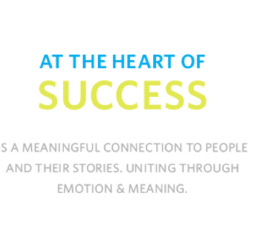
Branding is a Verb.
I often avoid the word “brand” altogether. Why? Because for many people – particularly the analytical and data-driven minds who control budgets – brand-building represents high-budget initiatives designed to drive “identity” and “awareness” and with little perceived impact on driving sales and the bottom line.
Unfortunately, this one-dimensional perspective on “brand” and “branding” is pervasive. And, I think we can blame the origin of the term: when cattle were branded, it signified “ownership” – a symbol of identity. And for many people, that’s about where it all started… and stopped.Brand was a noun. A logo. A typeface and font dictated by a brand manual. A tangible representation of identity that signified where something originated and symbolically provided a shortcut for what we could expect. Think: Coca-Cola, IBM, McDonald’s. These large, dominant corporations became synonymous for the term “brand” itself because branding was a strategic pursuit that could only be afforded by those with big-time advertising and media budgets . And, boy, did they spend. But it’s oh-so-much-more.
Limiting brand to your identity is kind of like saying you are only what you wear. Because we’re all brands. Fledgling start-up, contract employee, consultant, established organization or the person looking for a job:we’re all brands that represent a promise of the value we’ll deliver. Wait. That’s a verb that snuck in there. Brand is a verb: integrating “what you stand for” with “what you do.” It’s the action-packed, intentional execution of strategy, the doing: backing up what you promise and delivering on what the people who engage with you expect (and hopefully then some). And that’s why your brand stories are so important: they are the container of meaning for your customers, employees and all stakeholders.
Think about it for a second: both Dunkin Donuts and Starbucks serve coffee. But you know they couldn’t be more different. It’s not just the products, but the delivery of their unique brand promises — the experience – that separate them. Their employees and customer’s stories – reflecting their personal perspective and experiences – are the real indicators of what the brand really represents.To set and firmly establish a lasting connection between your desired position and the expectation of customers, to really standing for something in the minds of people, requires consistent delivery in everything you do. The intentional, conscious act of branding – cultivating the brand stories that support the kind of position you desire -will provide you with:– A blueprint for how you operate – A reputation management system – A means to define, manage, and deliver value & meaning – The direction to create experiences that reinforce your core values – A culture and environment in which your potential can thrive Isn’t that something we all want? How can you be more intentional in designing strategies and tactics that will reinforce where you want to go?



